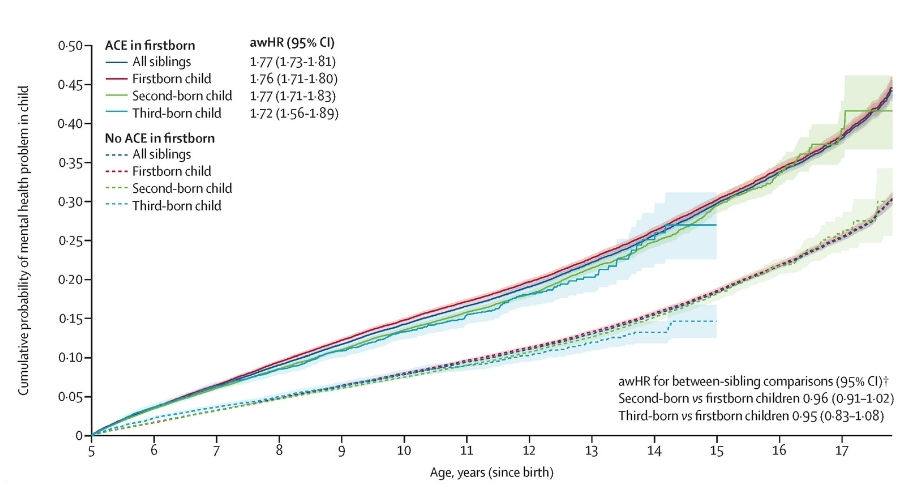How One Child’s Trauma Signals Risk for the Whole Family
ACEs in a firstborn child's first 1,000 days of life were associated with increased mental health care needs among the child's siblings.

Read Time: 2 minutes
Published:
When a firstborn child experiences trauma, the ripple effects often extend to others in the family. Adverse Childhood Experiences (ACEs), such as exposure to neglect, violence, and mental illness, are known to increase long-term physical and mental health risks. They also serve as warning signs. New research shows that a firstborn’s exposure to adversity may signal broader household hardship that puts younger siblings at risk of poor health, as well. Identifying these signs early can help public health professionals intervene sooner and prevent long-term harm across generations.
In the United States, nearly two-thirds of adults have experienced at least one ACE, and nearly 1 in 6 have experienced four or more. A growing body of research links ACEs to a higher risk of mental health disorders, substance use, chronic diseases, and even delays in educational attainment and early mortality.
A recent study by Shabeer Syed and colleagues analyzed an English birth cohort of over 500,000 children, tracking outcomes from birth to adolescence. Mothers with firstborns who experienced ACEs during the first 2.7 years of life (1,000 days) had 1.71 times as many children with mental health problems between ages 5 and 18 years compared with mothers whose firstborns did not have ACEs. Children in these households experienced 50% more emergency hospital visits and were twice as likely to receive care for mental health concerns as those whose eldest sibling had not been exposed to ACEs.

Early and regular screening of all children in a household is essential. Identifying these challenges before younger siblings are born or exposed can help prevent long-term harm. Since household adversity rarely affects just one child, timely detection can support the well-being of the entire family.
Prevention doesn’t start with the child—it starts with the adults. Supporting parents and caregivers through services like mental health care, housing stability, and income support addresses the root causes of household adversity. Without this, child-focused interventions may miss the mark. Recognizing the interconnected nature of ACEs within families allows public health practitioners to better design upstream solutions that protect entire households.



